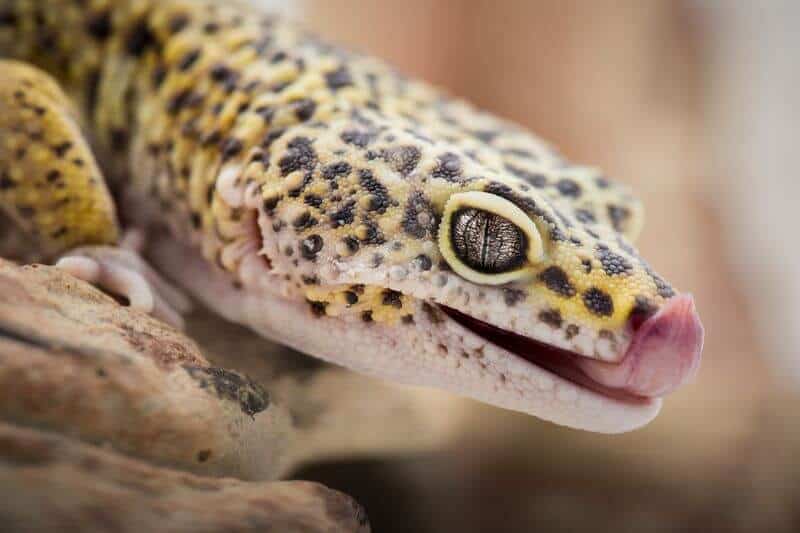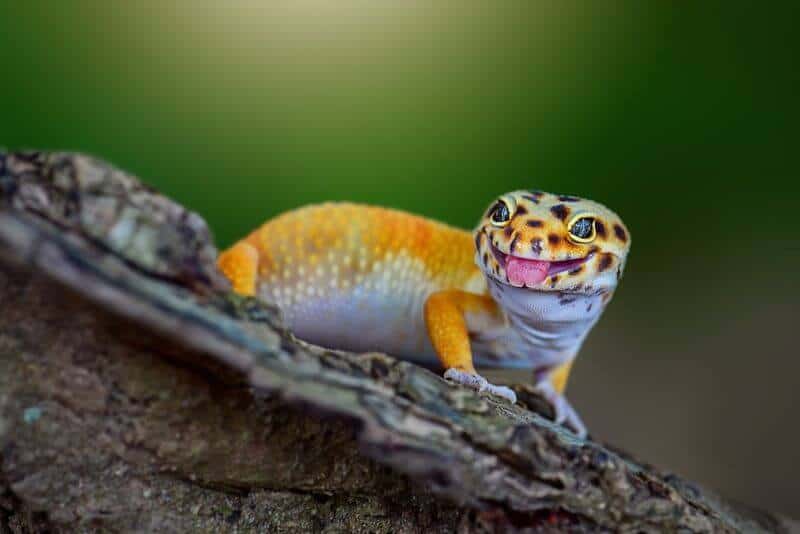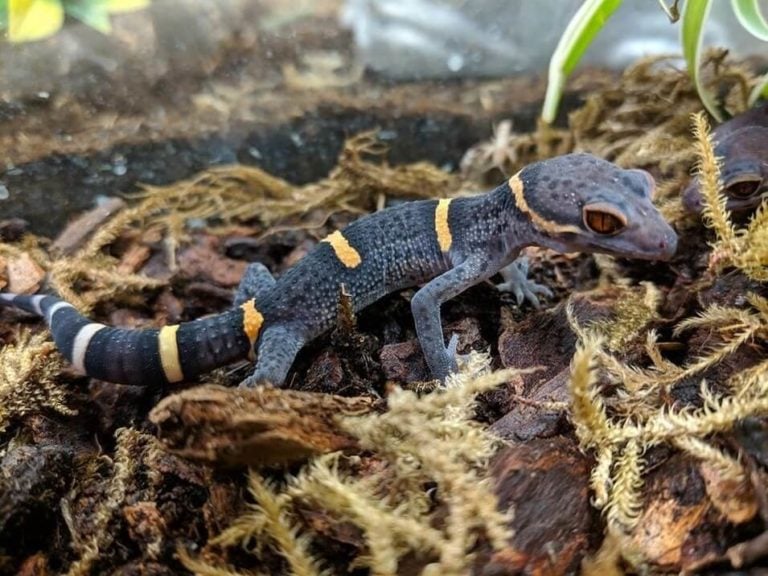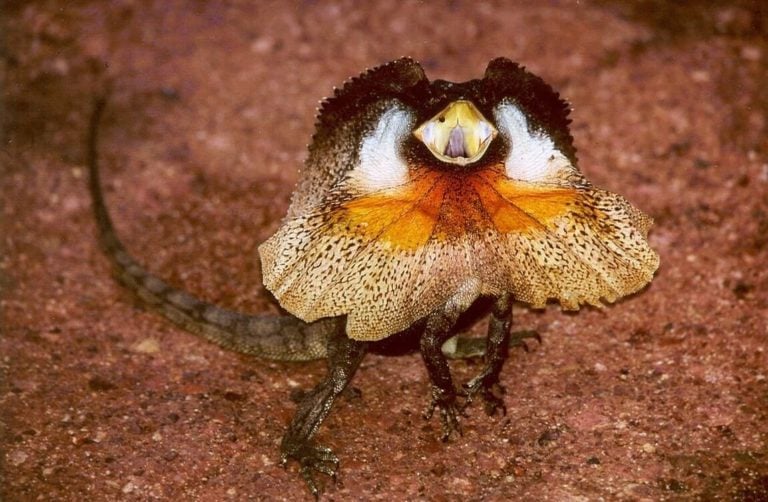It’s important to know if leopard geckos can eat fruit if you’re thinking about owning these reptiles as a pet. And while it might not seem like a big deal, the wrong approach to fruit can have major consequences for these lizards.
This guide will teach you everything you need to know.
Table of Contents
Can Leopard Geckos Eat Fruit?
Leopard geckos are a popular reptile pet that millions around the world own. Generally, these lizards are easy to take care of in captivity. They’re hardy and usually have voracious appetites, making feeding these critters straightforward.
That said, there’s a lot of misinformation about the needs of leopard geckos. More specifically, what you should and shouldn’t feed them.
So, can leopard geckos eat fruit?
Despite what you may have heard, leopard geckos cannot and should not eat fruits. They are natural insectivores and require a diet filled with bugs.
While most leopard geckos are more than willing to gobble down fruits you provide, feeding them any plant-based materials can lead to substantial health problems. Never feed your leopard geckos fruit, no matter how much they beg!
Why Not?
Other reptiles have no problems eating fruits. For example, chameleons, bearded dragons, and iguanas can have a healthy dose of fruit as part of their regular diet. So why can’t leopard geckos?
Here are a few important reasons why.
1. Sugar Content
For humans and omnivore animals, fruit is a healthy food. Plant-based foods are full of fiber, vitamins, and essential minerals. But they’re also chock-full of sugar.
The sugar content in fruits is downright dangerous for a leopard gecko. It doesn’t matter if it’s a low-sugar avocado or a super-sweet grape, any amount of sugar is harmful for them.
Like humans, sugar leads to a buildup of plaque. Did you know that leopard geckos have 100 teeth? They’re minuscule, but that’s still a lot of surface area!

Plaque is a dangerous thing for leopard geckos to have on those tiny teeth. Over time, the plaque causes mouth rot. Also known as ulcerative stomatitis, this condition can be life-threatening.
Mouth rot inevitably leads to infection. Leopard geckos are tough, but they’re not tough enough to make it through harmful infections that spread throughout the entire body. Many die because of the condition, which is a big reason why they can’t eat fruit.
But that’s not all.
Even if your leopard gecko doesn’t develop an infection, the sugar will wreak havoc on the body in other ways. Too much sugar can lead to diabetes and also cause fatty liver disease and a host of other unwanted health complications.
Do your leopard gecko a favor and avoid the fruit entirely!
2. Digestive Issues
If the sugar issue wasn’t enough to make you want to avoid fruits, this fact will.
Leopard geckos can’t eat fruit, because they simply can’t process it effectively. As mentioned earlier, they’re insectivores. As a result, they lack the biological makeup to consume and digest plant-based matter healthily.
Sure, your leopard gecko might consume fruit without any issues. But they’ll encounter problems getting that food through their system.
You see, herbivores and omnivores have a unique organ-like structure that sits between the large and small intestines. You have one, and so does every other herbivore and omnivore. It’s called a caecum.
The caecum acts like a pouch to catch any undigested foods. In the case of fruit, it captures the fibrous cellulose that makes up plant-based matter.
Leopard geckos do not have a caecum. They don’t need one! Insectivores like the leopard gecko have robust small intestines capable of digesting tough exoskeletons. The small intestine is more developed, ensuring that most digestion occurs for optimized nutrient absorption.
These lizards don’t have a need for a caecum.
But here’s the thing: The small intestines can’t fully digest cellulose.
Herbivores and omnivores have a longer digestive tract that’s more acidic than insectivores. As a result, plant-eating animals can eventually process the cellulose. It takes longer, but their bodies are up to the task.
That’s not the case with leopard geckos. So what happens?
When they eat fruit, the leftover cellulose has nowhere to go. They can experience extreme digestive troubles. In many cases, leopard geckos will regurgitate the cellulose.
That might not seem like a huge deal at first, but it opens up the floodgates for tissue damage, infection, and even death.
3. Calcium & Phosphorus Imbalance
Another reason why you can’t feed leopard geckos fruit is that it throws off the precise ratio of calcium and phosphorus the reptile needs to stay healthy.
Leopard geckos need calcium and phosphorus for many reasons. Together, these minerals help build strong bones. However, the reptile needs more calcium because it helps develop eggshells and maintains the functions of the animal’s shells.
Calcium supplements are a normal part of leopard gecko diets. Dusting feeder insects in supplements to ensure that these reptiles get enough is common practice for leopard gecko care.
That’s all good and well, but what do fruits have to do with any of that?
Fruits have high levels of phosphorus and very little calcium. That’s a problem because it throws off the delicate balance of calcium and phosphorus these reptiles need. It’s not about pumping your pet with both minerals equally. They must have a precise calcium-to-phosphorus ratio of 2:1.
When leopard geckos eat fruit, it raises their phosphorus levels and dangerously shifts this ratio. That puts them at severe risk of developing one of the most devastating diseases to plague these animals. We’re talking about metabolic bone disease.
Metabolic bone disease can affect many reptiles, and it all comes down to phosphorus and calcium levels.
The disease is excruciating and causes a slow death. It effectively deforms the skeletal system and creates massive health problems.
In the early stages, leopard geckos with metabolic bone disease usually have low energy levels and experience decreased appetite. You may also notice their toes twitching.
As it progresses, the disease causes deformities in the jaw, legs, and spine. Paralysis is common, and many leopard geckos experience broken bones and rectal prolapse. Things get worse from there as the bones get brittle and can no longer support the reptile’s organs and weight.
It’s a debilitating disease that kills more of these pets than most people realize. As an owner, it’s up to you to provide a diet that maintains that fine calcium and phosphorus ratio. Feeding fruits is a bad idea, significantly increasing the risks of metabolic bone disease to occur.
4. Skull & Jaw Shape
Finally, let’s talk about leopard gecko jaws.
These insectivores don’t do much chewing. They have teeth and capable jaw strength to grab, crush, and kill their insect prey. But they can’t actually chew their food.
This is another reason why leopard geckos can’t eat fruit. These foods are full of cellulose, and chewing is necessary to break the fruit down into chunks that the animal can reasonably swallow.
Herbivores and omnivores have better-developed jaws that can handle that task. They can chew the food to pre-digest it, doing some of the heavy lifting to ensure maximum nutrient absorption. That’s not the case with leopard geckos.
Their jaws are far too small and weak. If you’ve ever seen a video of a leopard gecko eating fruit, you’ll notice the struggle. They can manage to get the fruit down, but it’s a difficult task.
Because they can’t do tons of heavy chewing, you must also contend with the risk of choking. Pair all that with digestive issues, and it’s a recipe for disaster.
Are There Any Uncommon Situations When You Can Feed Them Fruit?
With all this in mind, is there any time when you can feed leopard geckos fruit?
Believe it or not, there is. However, those instances are rare.
In some cases, veterinarians recommend providing fruits to leopard geckos when they are recovering from an illness. It’s a way to give the lizard a boost of nutrition and ensure they get the calories they need.
But here’s the thing: You can’t feed leopard geckos fruit as-is. Veterinarians understand the risks and rarely make this recommendation. When they do, they’ll provide strict instructions.
Expert Tip: Typically, it involves blending a few pieces of fruit with normal insects to create a smooth slurry. Then, you must hand-feed the leopard gecko this liquid supplement as they recover.
We must stress that you should only do this if you have direct instruction from your vet. Even as a slurry, the sugar and phosphorus content can cause trouble. That’s why it’s rarely recommended. When it is, it’s usually only for a handful of meals at most.
If you want to take advantage of the beneficial vitamins and minerals that fruits offer, there are other ways to go about it. The best course of action is to use fruits to gut-load your feeder insects. Provide fruit to crickets, Dubia roaches, or mealworms a day before feeding the bugs to your leopard gecko.
Top them all off with a calcium powder supplement, and you have a nutritional meal for your lizard without any of the risks.
Conclusion
Leopard geckos should not eat fruit the vast majority of the time. While there might be occasional situations where it’s recommended, you’ll want to avoid these foods if you own these little creatures.
If you have questions about anything we mentioned in the guide above, send them over. We’re more than happy to help.



